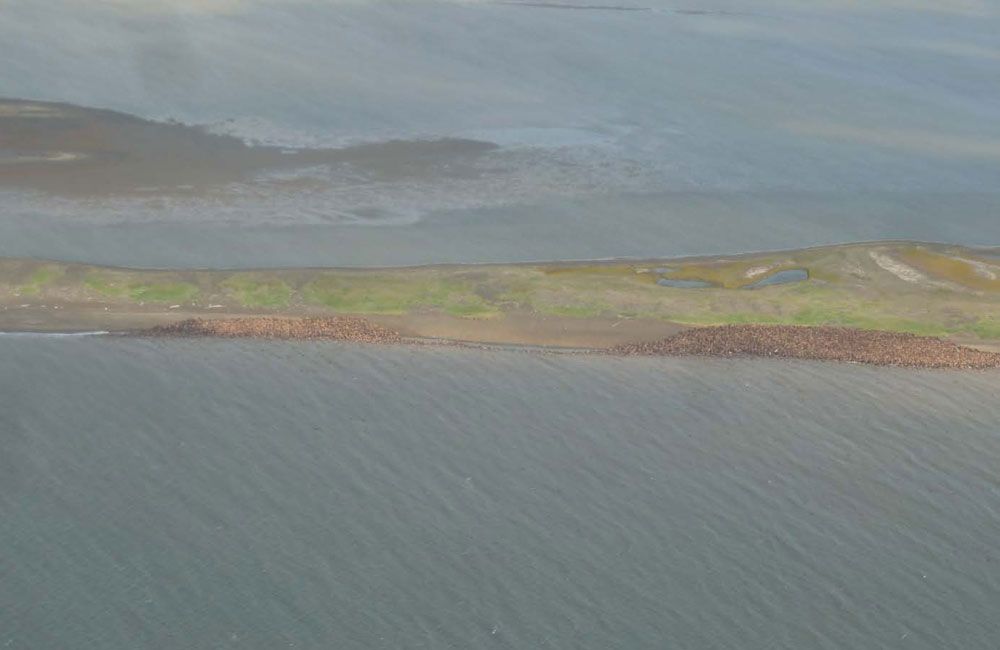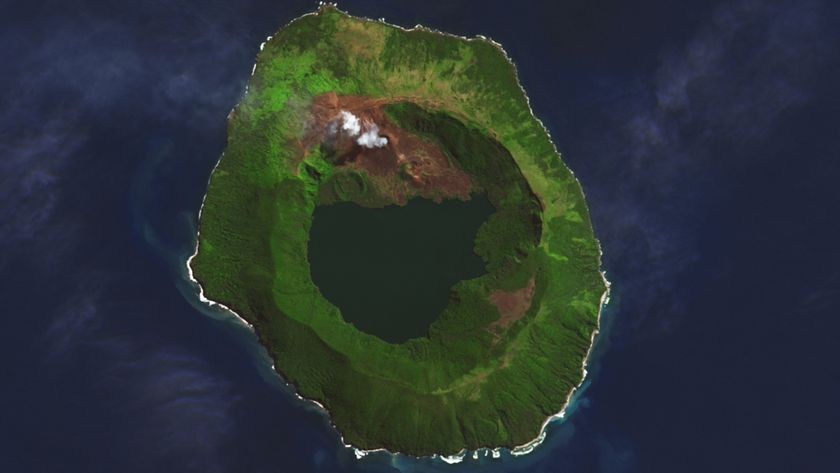Thousands of Walrus Begin Early Haul-Out in Alaska

Prompted by receding Arctic sea ice, walruses have begun hauling out on the Alaskan shore by the thousands.
In recent years, walrus migrations have happened on an unprecedented scale with the animals coming ashore in greater numbers, in new places, and at times not seen before. Last year, as many as 20,000 walruses hauled out on the Alaskan shoreline of the Chukchi Sea, near Point Lay, according to the World Wildlife Fund. [Giants on Ice: Gallery of Walruses]
This year, the mass migration began three weeks earlier than last year, with a handful of walruses tagged by the United State Geological Survey heading to shore as early as Aug. 7. Then on Wednesday (Aug. 17), about 8,000 were spotted on or near a beach north of Point Lay, the Associated Press reported.
"These dangerously large walrus haul-outs in the Chukchi Sea are a direct result of extreme Arctic sea- ice melt caused by climate change," said Geoff York, an Arctic wildlife biologist with the World Wildlife Fund. "Unless carbon pollution is dramatically reduced, walruses, polar bears and even people in the Arctic will face a much more perilous future than they do already."
The massive herds are dangerous for the walruses themselves, because the animals can stampede, often killing calves. In addition, the concentrated group of walruses, which eat mollusks, clams and other animals they retrieve from the seafloor, strains the local environment.
Like the walrus, polar bears are struggling with the reduced extent of the sea ice. A recent study showed the loss of sea ice was forcing polar bears to swim longer distances, threatening the survival of their cubs.
Walruses must dive for their dinner, and during the summer walruses, particularly mothers and calves, hang out on the sea ice, which drifts over the Chukchi Sea. But in late summer, when the sea ice extent is low, as it has been in recent years, the ice retreats so that it covers only deep waters. If these waters are too deep for the walrus to feed, they come ashore.
Sign up for the Live Science daily newsletter now
Get the world’s most fascinating discoveries delivered straight to your inbox.
The extent of the Arctic sea ice reached a record low in September 2007, and this year may break that record, according to the U.S. National Snow and Ice Data Center.
You can follow LiveScience writer Wynne Parry on Twitter @Wynne_Parry. Follow LiveScience for the latest in science news and discoveries on Twitter @livescience and on Facebook.













